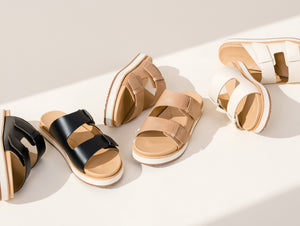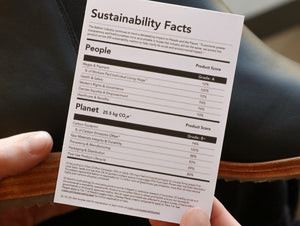Patrick Woodyard shares how, and more importantly, why, he founded Nisolo.
A Note from our CEO
The deeper you dig, the more you'll come to realize how broken the fashion industry is today. Yet, there is hope––even for the pragmatist. A fresh group of brands and manufacturers are on the rise, fighting to allow the industry to reach its hidden potential as a positive force for good. Since this movement's recent inception, our team at Nisolo has remained proud to fight alongside these revolutionary organizations. Here’s a little bit about the “why” behind Nisolo and where it all began...
As an undergrad, I studied Global Economics & Business and spent a fair amount of my time traveling the globe learning how international business can have a very positive or very negative impact on the world. Shortly after graduating, I moved to Peru where I pursued an opportunity in microfinance with the goal of helping women grow their small businesses. Little did I know, my job was in Peru's shoemaking capital, and I was soon introduced to the centuries-old, fascinating art form of shoemaking. Blown away by the skill that abounded, I was frustrated to learn that the producers I met faced unbearable obstacles to financial wellness and that even ever-so-slightly competing in the global fashion industry was a lost cause for them.
I knew things could be different, and I saw massive potential to drive transformational change in this community by starting Nisolo. After being exposed to the same dirty truth that most consumers, blinded by the allure of cheap prices, are still completely unaware of today: the explosive growth of the global fashion industry has fared well for some, yet has been violently unjust for most everyone else. The truth is that low wages and poor working conditions are rampant, with 98% of garment workers around the world today not even receiving a living wage. And, the last several years have been some of the deadliest in history, with tragedies such as the Rana Factory collapse and Ali Enterprises fire alone collectively killing 1500 people and injuring thousands more.
Due to exorbitant water usage, the irresponsible disposal of waste, the exponential growth of manmade non-biodegradable fibers such as polyester, and filthy carbon emissions from coal powered factories in the developing world, the planet isn’t faring too well either. In fact, the fashion industry is now in the top five of the most pollutive industries in the world.
While we are still very far from having it all figured out, I started Nisolo to serve as a fashion brand that would care for the planet and producers just as much as the end consumer. We even released an Impact Report that details some of what we’ve accomplished in the last few years thanks to our amazing community of customers and supporters. And, rooted in the firm belief that progress alone should never be the finish line for Nisolo or anyone else, we just as importantly share a bit about where we believe we can do better.
Our end goal is to play our part in pushing the fashion industry in a more sustainable direction.
Recalling that business can have a very negative or positive impact on the world, our motivation comes not only from how bad things have become but from the opportunity at hand. This is an industry that employs hundreds of millions of the world’s poorest people. What would the world look like for future generations in these communities if, rather than systematically holding people in a never ending cycle of poverty, proper treatment and a fair opportunity were guaranteed for all producers? I’ve seen firsthand the impact this has had on our shoemakers and the future of their children. I want to see this happen worldwide.
As consumers, we hold immense power through the demand that we create. There is a reason why the ethical fashion space is experiencing explosive growth. We all want a better industry. And, that’s why we encourage you to dig deeper into your favorite brands’ supply chains. If they are not visibly demonstrating a move in the right direction, we encourage you to ask them for an explanation or for more transparency where it is lacking. If you want to learn more about our own supply chain—where we’re succeeding AND where we know we need to improve—we invite you to read our Impact Report.
Ultimately, this is a marathon, not a sprint, but by working together, we believe we can drive monumental transformation in the fashion industry within our lifetime. Now, let’s go make it happen!




























